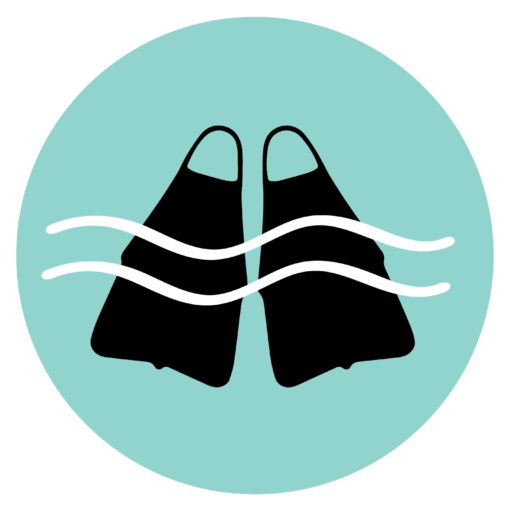The following post is an interview with Jason Hackforth, a bodysurfer and handplane shaper based out of Santa Cruz, California. He is the owner of Superbiscuit Handplanes.
So Jason, can you tell us a bit about yourself and how you got into bodysurfing?
Bodysurfing just kind of happened for me as an extension of being at the beach all the time. I grew up right across the street from New Brighton beach in Capitola, located in the southern part of Santa Cruz county.
My friends and I used to hang out at a beach in Capitola called Northsides, and a lot of times if we didn’t have boards or gear or anything, we’d just bodysurf. I remember one day, there was this weird little bowl that we had never really seen before at Northsides, an amazing little A-frame. Total tube frenzy!
It was only there for like an hour, and when the tide shifted it was gone! But our appetites had been whetted, so we started heading to other spots in search of better waves. That was really where it all began for me.
What inspired you to start shaping bodysurfing handplanes?
It was probably around Winter of ’96 when I found half of a broken surfboard in the garbage can at 26th Avenue beach. I took it home, stripped the glass off, cut it into blanks, and shaped my first handplane.
A friend of mine later taught me some elementary glassing techniques, and I started making more handplanes. I also began experimenting with different shapes and bottom contours.
People were approaching me as I was getting out of the water, saying stuff like, “What the hell is that?”. I even had a few people tell me, “That’s a cool little hand gun!”. I had no idea at the time that there existed a mass produced plastic handplane called the Hand Gun.
Nowadays, people call them handplanes, but in the mid-90s, that term was used for woodworking devices. I wasn’t aware of any term that described the things that I was making, so I just started calling them “biscuits” for lack of a better term.

As we see more big waves being ridden by bodysurfers, do you see a need for specialty equipment?
In general, larger handplanes perform best in mushy, small waves. Smaller handplanes perform best in big, hollow waves.
Some of the Hawaii guys I talk to won’t go out with the bigger planes because they become a liability in shore break waves. With that much water moving around so violently, that last thing you want is a big flotation device strapped to your hand.
That being said, I think once you get into the realm of Nazaré and Todos, a larger plane would help you cut through the choppy sections in the face and allow you to go faster.
Where do you like to bodysurf?
I prefer sand as opposed to reef, and side bowl-type waves over straight walls. Unless I’m out of town at some kind of event, I usually won’t go out unless it’s barreling. I prefer smaller waves with good shape rather than bigger waves with poor shape.
I really like bodysurfing in Ocean Beach, San Francisco. It’s very challenging and dynamic. I’ve gotten some great waves there, and some profound beatings. Plus, it’s just weird to be bodysurfing in San Francisco.
I love Sandspit. I bodysurfed that place one time in my boxers (that’s a different story) when it was 2 feet and no one out. It was amazing. I’d love to catch it working properly, but it seems to get crazy crowded when it’s on. I’d probably get my head taken off out there.
Lastly, if someone reading this is keen to start bodysurfing in NorCal, how would you recommend they start out?
Start simple—no handplane, no fins. Find a spot where you can just stand there on the sand and pull into barrels without all the distractions of gear. Get used to the feeling of the ocean, and of riding the wave. Getting your timing down is really important.
Once you’ve developed the technique, get some fins and get a little more adventurous. When you eventually do move up to a handplane, you’ll notice the difference compared to going freehand. Also, make sure to invest in a good 4/3 wetsuit!


